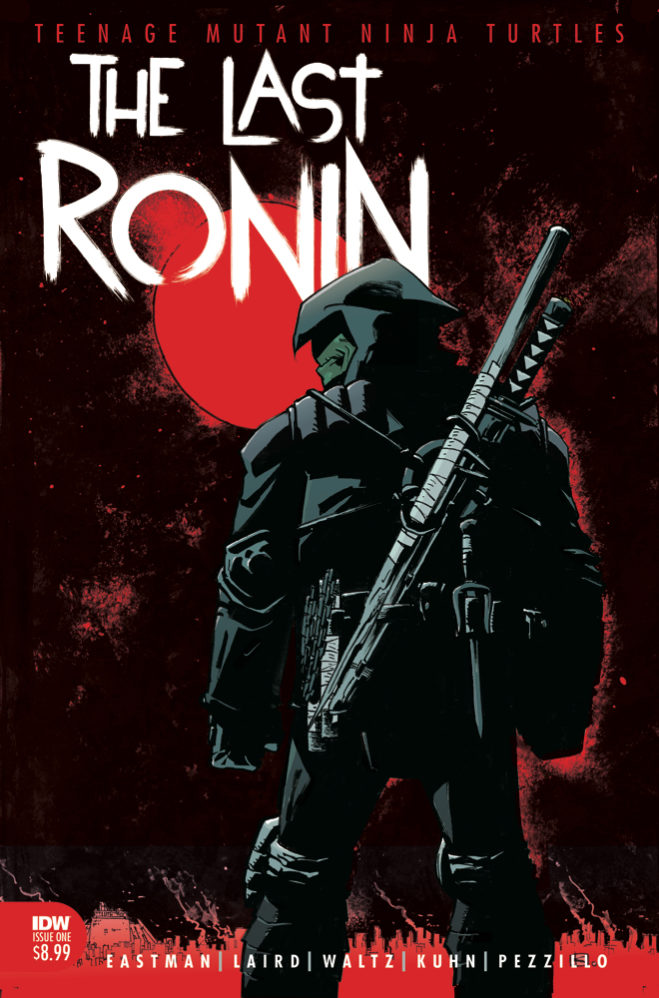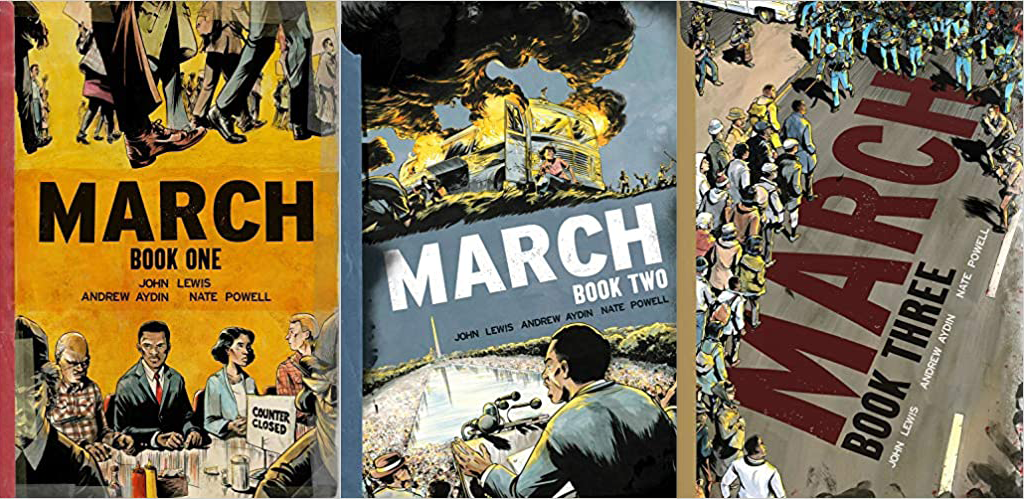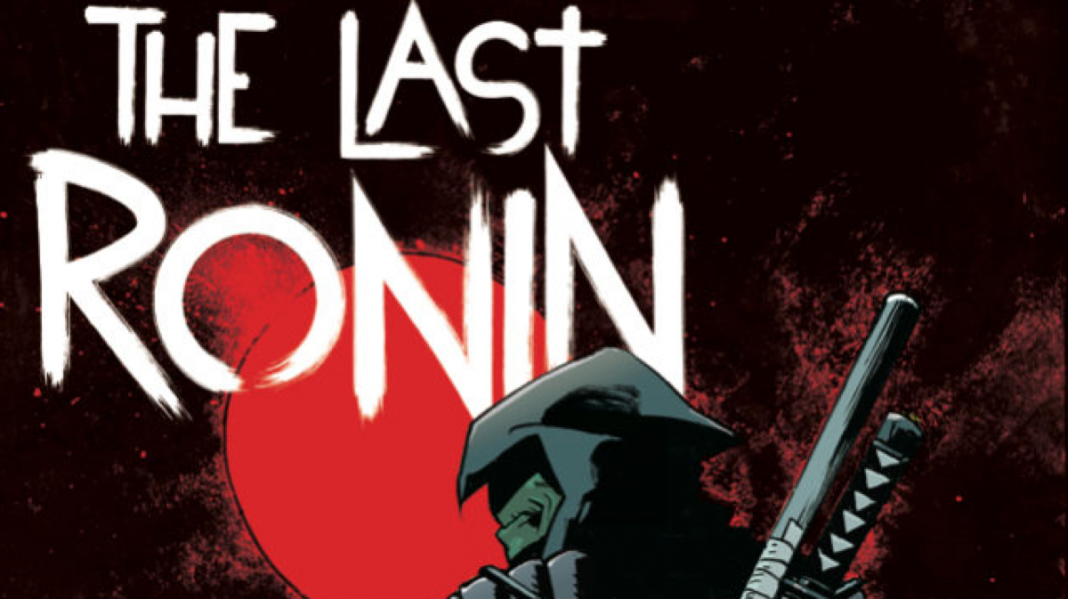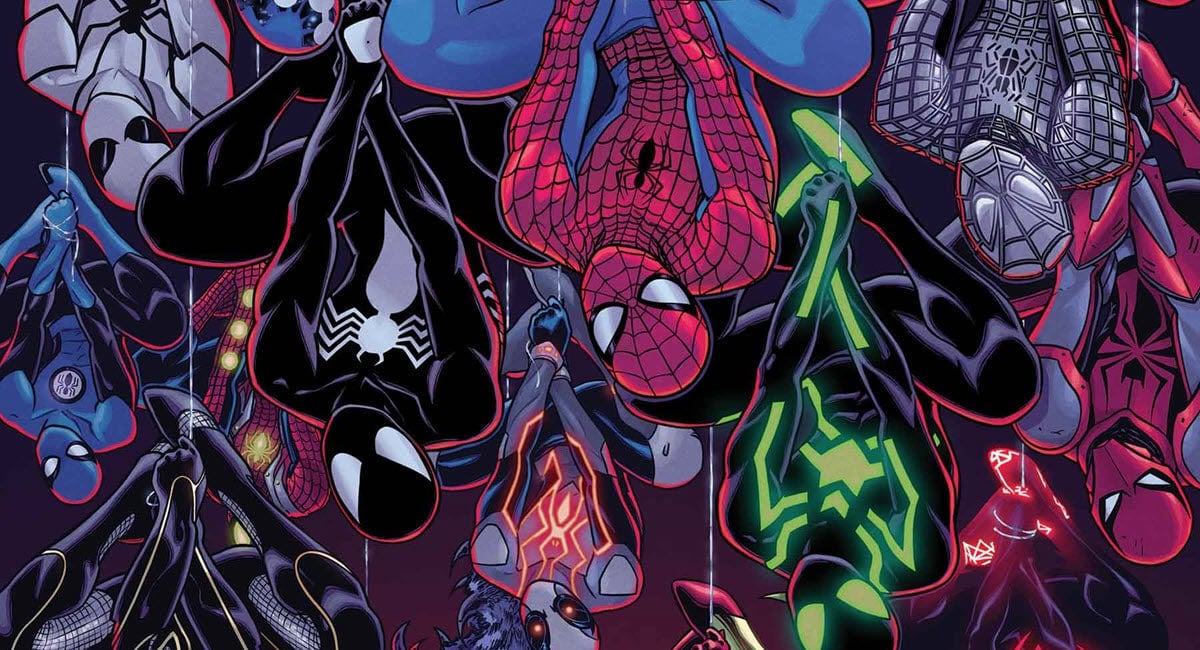
As we allude to in our talk, IDW has had some shake-ups of late, on top of the general COVID chaos. However, after reading this interview, it’s clear that Marsham has a handle on getting things stabilized and taking the company forward in a time when all of publishing, not just comics, is changing rapidly.
MacDonald: Let’s talk a little bit about some of the formats or genres and how you see them at IDW. I mean, obviously you come from a book publisher and I would say that IDW has always had a pretty good book trade business, with maybe more emphasis on Top Shelf. What are your plans for original graphic novels and collections in the book trade and the direct market?
Marsham: Honestly, I feel like part of this gets into how we balance the original side versus the side that works with licensed properties. But I think on both sides, it’s a matter of looking at who is ideally going to be excited by the stories that we’re bringing together, and then where are [these readers]? And it means strengthening the infrastructure and relationships across the board, whether it’s making a better landing page for people who are curious about anything that we’re doing and making sure that people know that hey, you can like buy stuff directly through here. And that we have a simple, streamlined way of doing it. How do we look at our sales and marketing team and give them the resources needed to be able to not only talk to the direct market as always, but to be able to say we don’t just want to put something out there and hope B&N takes the same number as last month, because that’s not enough. And again this goes into having the right size list too, because we need to have a manageable amount of titles. So whether it’s going to be a trade focused book, or something focused on mass market, it’s being able to identify it out front and say, we have a really strong business, and we know that dedicated fandom when it comes to comics. That is fantastic.


Marsham: And it’s been an amazing evolution to watch in my time in the industry from the era of bang, pow comics aren’t just for kids anymore. A lot of the growth across the industry is coming from younger properties and often not from copyrights that have existed for the past 70-80 years. And that is fantastic to see. It really is a question of how do we make sure we’re not being a bunch of moths flying towards the brightest light. We have a strength in the direct market and IDW is a company that makes comics for comics shops, there’s no intent of changing any of that. It’s just a matter of seeing if those comics can be sold in other places and other formats. The forced evolution that we’re all seeing because of 2020 and how the pandemic affected physical retail is making a lot of people look at what their shelves should look like. I know a lot of shops around the Los Angeles area were already selling more original graphic novels in addition to books and table top gaming properties in a lot of places. It really was this question of how many different circles can we get overlapping with our retail experience? And now it’s a thousand times [harder] now that that no one’s wandering in off of the street being like, oh, we were bored and going out for a walk, and we thought we’d loiter here for a little while. You have to be able to have the best presentation possible, through your store and website and whatever presence you have.
And it’s not just a comics shop. I have to believe that independent bookstores are having a lot of the same conversations in terms of how do we strengthen our graphic novel space? How do we turn the people who are reading these books into the people who might want to move into prose books next? I think that IDW can fit in as a really great hub between all that.
MacDonald: Absolutely, comic shops are indie bookstores and they’re all evolving. I rarely go too far away from my apartment any more, which is crazy, but I was on Broadway and I walked by Forbidden Planet, which had a crowdfunder early in the pandemic, because they were troubled. But it was busy, in a safe COVID way. People were in there and they’re very much a store that sells all kinds of stuff. They have a huge toy selection, collectible card games, all that stuff. I was really happy to see people in there. But anyway, getting back to publishing, a specific project I remember now that IDW was doing the Marvel comics for kids. Are you continuing to do that?

We’re definitely continuing that partnership and also on the Star Wars Adventure side it’s stories we haven’t seen before from the Clone Wars to the literal Star Wars. It’s a place for kids who loved these movie and love this world and here’s more of that world. We had a friend in over the weekend with a four-year-old who was watching the original and prequel trilogies. And I was like [laughs], oh right, four-year-olds are watching it!
MacDonald: Right. Well, at Disney it was always–and I’m sure you faced this many times—you have to make the material for what the kids think is one group older than them so they want to read it. If it’s their age group, they think it’s kid stuff.
Marsham: If you’ve got Peter Parker, teenager, he’s going to automatically appeal to 12-year-olds wanting to read about Peter Parker. I don’t have any illusions that an 18-year-old is going to think that it’s the coolest.
With you talking Forbidden Planet, when I think about a comic shop that has that sort of balance of friendly for kids and for the people who might be looking for different things, I used to live a couple of blocks away from Bergen Street Comics. That sort of balance was something that I loved to see, because it was literally if you walk in with your kids, the stuff for them is right there at their level. And then for the people who are more Wednesday focused, it’s not like it’s in the back, but it’s [in a different place.]
MacDonald: The old milk at the back of the store theory. Well there are so many things to talk about, Nachie, but obviously you’ve come in at a challenging time for everyone and everything. So what are some of the biggest challenges for IDW in the coming year and some of the biggest opportunities?
Marsham: They are, I think, a little bit intertwined, honestly. I think some of the biggest challenges are just our own internal logistics and facing what any company is facing in terms of getting used to working at home. Like you were saying earlier, this is the new normal and it’s not changing anytime soon. So really making sure that we can be as strong as possible as production ramps back up while still working in this very weird and disjointed way. And I mean, for me and any of the other people who have started up recently, it is not ideal to be introducing yourself to a company from your attic! Saying I am here for you and I want to be able to hear what you all have to say, so, you know, email me. It’s not ideal, but it is certainly doable. And it’s just being able to build that trust in each other so that we can be doing the best job for ourselves and for the talent and marketplaces moving forward. I think that figuring out how quickly everything is changing on the face of retail, and then figuring out how we can help is one of the giant challenges. Everyone’s looking at their calendar and they have, you know, San Diego Comic-Con 2021…and a big question mark.
MacDonald: Sigh. I know.
Marsham: It’s a matter of aggressively trying to consider as many permutations as possible to say, can we know these books are coming out when they’re coming out? How do we support them? You know something in the immediate future that we’re really excited about is Teenage Mutant Ninja Turtles The Last Ronin, which is a story that was literally decades in the making. Okay, we can’t do live events but we could do X, Y, and Z. So how do we triple down on what we can do online and how do we make people feel like that they still have a connection to the creative team and have their questions answered? When it comes to the trade world, we’re looking at the end of 2021, the beginning of 2022 to make sure that we are still looking forward as much as possible and trying to draw the lines in the sand for where we can have big launches and where we can really say we’re investing our resources into a book that’s gonna come out in spring or summer of 2022.
And then just continuing to make sure that we can present all of our strengths to licensers in the best way possible. There are lots of companies that we’ve worked with for over a decade now, in terms of being able to shepherd the brands in the comics and the graphic novel spaces. They might be happy that we’ve been doing these comics and supporting these shows or characters for years. Let’s talk about all the retail spaces that we want to be able to get into, and the ways that we can have stronger stories out in the world, because anything that’s better for us is going to be better for our partners as well. It’s just about us really being aggressive in pushing it, what we can do and not resting on our laurels with any successes.
This place has had a lot of success in a lot of different ways over the years, and I don’t want to take any of it for granted. And I just wanted to be able to forge it a little bit stronger and get more out of it in the future. And part of that is also being honest with what you were saying in terms of, okay, it’s been a chaotic bit of time. No one likes to go into a situation where they’re saying, hey, let’s introduce you to the NEW new publisher or anything like that. But realistically, that is who I am to a lot of people. So for me, it’s being honest about that. And I don’t want to sugar coat anything. Let me hopefully try to take any issues or worries or concerns that might be there and then talk about how we’ve never been in a stronger position to be able to get to the places we want to be then than we are right now. You know, I certainly want to keep looking ahead, but I don’t want to pretend, the past wasn’t the past or anything like that.

MacDonald: What are a couple of books that you’re excited about? Big projects for next year? Here’s your chance to plug!
Marsham: That is a fantastic question. Where would I even begin? One of them I mentioned earlier, with The Last Ronin getting launched. We’ve published a lot of fantastic Turtle books over the years, but literally being able to say, this is something that Eastman and Laird were talking about in the Eighties, in the roughest form possible. And now we are literally living in the future, in some ways disturbingly so, that they were talking about. Bobbie Curnow, the editor, and the creative team have done a fantastic job of bringing that to life in a way that I think is going to be great for fans of the characters. But especially for people who have the first graphic novels on their selves, like I do, and maybe haven’t read things since. This is going to be a place for them to come back to that world in a unique way.
And then something that we haven’t really talked about the Artist Editions, because it’s not just the comics and graphic novels. There’s going to be a Jim Lee Artist Edition coming out in early 2021. Again, it’s going to be a place for people who are fans of Jim’s or fans of that kind of work to experience it in a unique way. So those are a couple in different ways, but you know, whether it’s for younger readers or older readers or collectors, there’s a little something for everyone in the future. So it’ll be good.

Marsham: When it comes to joining the admittedly small ranks of Black person who’s also the Publisher of a comics company, it’s simultaneously a proud personal moment and a sadly not surprising moment, right? This is not a perfect one-to-one analogy at all, but one of the many things that keeps coming to mind is when I was reading about Spider-Verse winning the Oscar a couple of years back, and one of the movie’s co-directors, Peter Ramsey, is a Black guy. And I looked him up and not only was he the first Black guy to win an Oscar for Best Animated, he was the first Black person ever nominated. And I was like, “that’s fantastic!” and I was like, “wait, what the hell?” And I’ve had the same reaction over and over again, whether it’s comics or other entertainment companies, or the field’s in the arts or science or education or finance, etc. and so on. Suffice it to say: there aren’t a ton of Black folks in publishing in general, and there aren’t a ton of Black folks in comics in particular.
When it comes to what I think comics can contribute to the broader reflections on race in America, more than anything, I want to make sure we’re telling diverse stories created by a diverse pool of talent, and to make sure anything we’re working on actually reflects the world we’re putting stories into. To me, the effect that representation has is literally immeasurable, especially in comics, where every panel on every page has the ability to reflect a reader. And that goes for any reader, at any age. And I don’t just mean representation in the “there’s a table with 10 chairs, one of them goes to a black man and one of them goes to a white woman and yay inequality has been solved,” I mean bringing stories and characters that feel honest, no matter how realistic or fantastical a world the backdrop may be. I’m excited to work with our editorial creative leads to bring in creator-owned books and to work with our franchise partners to make the best books possible, and the questions of “whose stories are we telling?” is always going to be top of mind for me.
And while representation’s come a ways since I was a kid, no one book or story or character is going to “fix it,” because it’s not a tangible problem to be fixed. It’s a constant effort towards being able to really see people living a different experience than you, and also of seeing ourselves actually. I think comics in particular and publishing in general can play a continuous role as long as there’s actually value placed on the idea that every month we can all collectively do a slightly better job than what was done in the previous month, month to month, season to season, year to year, from now until the Sun goes out.
I think the heart of the answer to your question is that storytelling can lead to understanding and empathy. It’s not just a matter of “the March trilogy is a great way to illustrate relatable elements of the Civil Rights movement for Black America,” because it’s a book that we’ve seen resonate with readers of all backgrounds. That understanding garners empathy for what folks have gone through and what folks are going through right now, and it makes a personal connection with the reader, no matter if it’s a biographical story like March or a fantastical and grounded one like Cosmoknights.
[This interview has been edited for length and clarity.]








